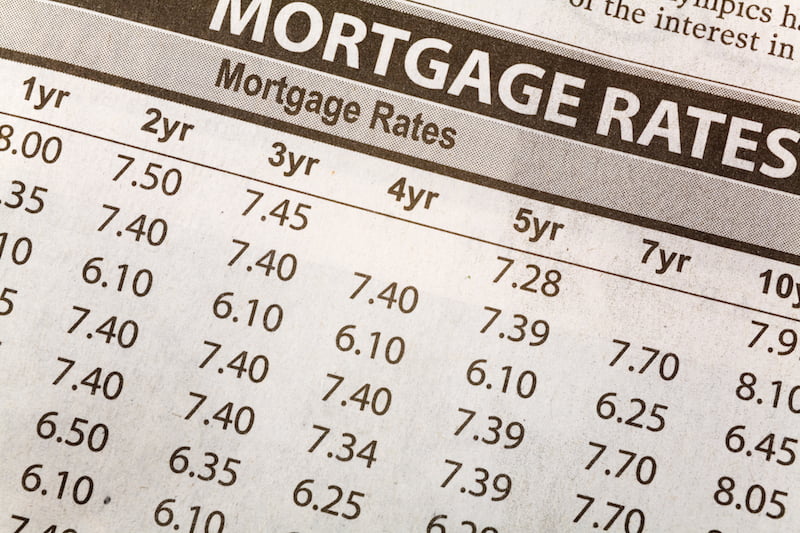Explanation of fixed and variable

Let’s talk about rates! Here’s the short story. Yes, the Bank of Canada dropped its interest rate. But it doesn’t affect all mortgages. Specifically, if you have a fixed rate there are no changes for you.
Now for the long story, and lots of information and lots of explanations.
Fixed-rate Mortgages
Yes, the Bank of Canada dropped its rate.
The Bank of Canada works with the GDP and inflation. this has no bearing on the FIXED rate mortgage market (at least, not for the purposes of this conversation).
Fixed-rate mortgages work with the Bond market. Your FIXED rate mortgage will not change with the Bank of Canada. If you have rate envy, Remember, your mortgage is a contract. If you want to change your fixed-rate mortgage, you will have a penalty. The severity of your penalty will depend on the lender.
There is some confusion as fixed rate rose very quickly over the last week. Whats causing the fixed rates to rise when the Bank of Canada rates are going down and the bond market is below 1%? Liquidity. Lenders need to ensure there are funds available to fund all of the pre-approvals and approvals in their pipelines, the rate increases act like a deterrent and for those who insist on moving forward, well than its just profit taking for the lender.
Variable-rate Mortgages
Variable-rate mortgages work with the Bank of Canada – a variable rate mortgage has a discount or a premium, so the rate is Prime minus/or Plus ___ = your rate.
Here’s a real world example: My own! My personal mortgage that was put in place four years ago is Prime 2.95% (currently) – minus 0.95bps = 2.00%
So what does this mean for me?
A.) I cannot lock into the 2.00%. That’s the difference between a fixed-rate and a variable-rate. Their rate stays the same – for better or for worse. And variable-rates change – for better or for worse.
B.) Having a variable rate means I get the good times AND the bad times. When Prime or the Bank of Canada rate goes up, so does my mortgage rate and payment. When the Prime or the Bank of Canada rate decreases, I *MAY* see my rate and payment go down the month following the decrease, provided the lender that my mortgage is placed with also lowers their Prime lending rate.
You’ll notice that there’s an *asterisk* there. Just because the Bank of Canada lowers the rate, does not mean the lender will follow. For example, The Bank of Canada Rate is currently .25%, and yet the bank prime rate is 2.95%. What’s up with that?
The Bank of Canada lends the money out to the banks. It is called the overnight lending rate. Then the lender (one of the Big 5 banks) adds 2% to the Bank of Canada rate, which becomes the Prime lending rate. This is the rate that the banks use to lend to consumers.
Which means that Prime should be 2.25% logically, right? WRONG. The lenders did not trickle down those drops to the consumer. This why the PRIME rate is 2.95% to the consumer.
(Do you want to add a line in here about how this is how the bank profits – it might sound obvious but it might help people to understand that there’s the BoC rate that the banks get to borrow money at and then they add on their own profit margins and then they lend to the public at BoC + bank profit??) _ Hmm not comfortable, I would be over stretching my knowledge base
Currently, with the quick drops coming from the Bank of Canada, lenders increased the discount. Meaning instead of Prime – ____= ____, it’s now Prime + ____ = ____.
This, of course, all depends on what type of mortgage you are considering. Are you buying, refinancing, or transferring a mortgage?
For example, a client purchasing a property wanting a variable rate mortgage today, they would receive Prime 2.95% + .10% = 3.15% for a five-year term. Remember, this will float, it may change tomorrow, it may change in 2 years. What part changes? Prime changes.
Definitions and Terminology
What is a Variable-rate Mortgage? A variable rate mortgage will fluctuate with the Prime rate throughout the mortgage term. While your regular payment will remain constant, your interest rate may change based on market conditions. This impacts the amount of principal you pay off each month. When rates are low, that means you are laying less interest and a higher percentage of your monthly payment is going towards the principal of your loan.
What is a Fixed-rate Mortgage? A fixed-rate mortgage offers a specific interest rate that is fixed or “locked-in” for the term of the mortgage. The amount of your regular mortgage payments is consistent, as is the portion of your payment that goes toward principal and interest.
What is the Overnight Rate: The overnight rate is the interest rate at which major financial institutions borrow and lend one-day (or “overnight”) funds among themselves. The bank sets a target level for that rate. NO reason, that was a copy paste from BoC (Hmmm… What should be where those dots are?? Is there a few words that could be added in to make it more clear?)Changes in the target for the overnight rate influence other interest rates, such as those for consumer loans and mortgages.
What is the Prime Interest Rate? The prime interest rate, also known as the “prime rate,” is the interest rate banks charge their most credit-worthy customers. It is a baseline rate upon which all floating rate loans are negotiated (for example, prime + 3%).
